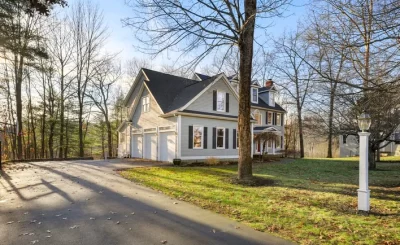If you’re considering artificial grass installation for your home, you’re making a wise decision. Artificial grass is beautiful and realistic, but it’s also low-maintenance and environmentally friendly. In this post, we’ll walk you through the steps of installing artificial grass so that you can have a perfect finished product. Let’s get started!
Plan the installation process.
Artificial grass installation is not a one-day job. Instead, it takes time, effort, and careful planning to get it done right. The first step to a perfect artificial grass installation is to plan the entire process from start to finish. This includes deciding on the type of artificial grass you want, measuring the area where you’ll be installing it, and ensuring you have all the necessary tools and materials.
Choose the right type of grass.
Not all artificial grass is created equal. There are different types for different purposes, so choosing the right one for your needs is important. For example, if you’re looking for an artificial turf that looks and feels like real grass, you’ll want to choose a product made from polyethylene or polypropylene. On the other hand, if you’re looking for an artificial turf that’s more durable and can withstand heavy traffic, you’ll want to choose a product made from nylon.
Measure the area where you’ll be installing artificial grass.
Once you’ve chosen the right artificial grass, it’s time to measure the area where you’ll be installing it. This is important because you need to ensure you have enough artificial turf to cover the entire area. To measure the area, use a tape measure and calculate the length and width of the space.
Calculate the amount of artificial turf needed.
Now that you know the area’s dimensions, you can calculate the amount of artificial turf needed. To do this, just multiply the length by the width. For example, if your artificial grass installation area is 20 feet long and 15 feet wide, you’ll need 300 square feet of artificial turf.
Choose a sub-base material.
The sub-base is what will support the artificial grass and provide drainage. It’s important to choose a durable material that won’t break down over time. Some common sub-base materials include gravel, sand, and crushed stone.
Install the sub-base material.
Once you’ve chosen a sub-base material, it’s time to install it. This involves spreading the material evenly over the area where you’ll be installing artificial grass. Once the sub-base is in place, you can compact it using a hand tamper or a power tiller.
Install a weed barrier.
A weed barrier helps prevent weeds from growing through your artificial grass. It’s important to choose a barrier that is made from a durable material that won’t break down over time. Some common materials used for weed barriers include landscape fabric and geotextile fabric.
Install artificial grass.
Now it’s time to install the artificial grass itself. This involves unrolling the artificial turf and cutting it to fit the space. Once the artificial turf is in place, you can secure it using nails, staples, or artificial turf adhesive.
Install infill material.
Infill is a material that helps support the artificial grass and keep it in place. It also provides drainage and helps to protect the grass from UV rays. Some common infill materials include sand, crumb rubber, and cork granules.
Use a brush to spread the infill material evenly.
Once you’ve installed the artificial grass and infill material, it’s important to use a brush to spread the infill evenly over the artificial turf. This will help ensure that the artificial grass has a natural look and feel.
Enjoy your new artificial grass installation!
Now that you have followed all of the steps, you can enjoy your new artificial grass installation. You’ll never have to worry about watering or mowing again! Artificial grass is a great way to create a beautiful, low-maintenance landscape. If you follow these steps carefully, you’re sure to have a perfect artificial grass installation that will last for years to come. Thanks for reading!








